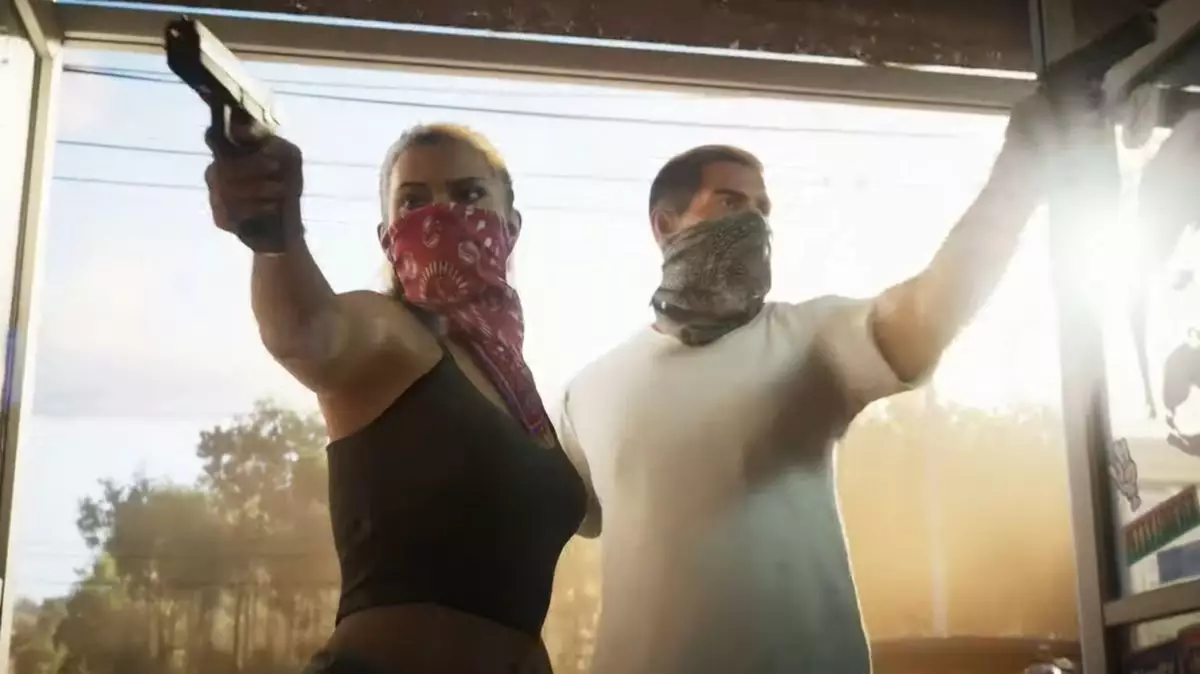In an era where the gaming industry is booming, the price of video games has seen a remarkable shift over the decades. From a modest $40 during the early days of gaming to a potential $100 price tag for the highly anticipated Grand Theft Auto 6, gamers are left questioning the sustainability of this trend. As analysts predict a future where exorbitant prices could become the norm, the delicate balance between consumer willingness to pay and corporate profit margins hangs in the balance.
The video game pricing landscape has significantly evolved, particularly over the last decade. Initially, $40 was the standard rate for a new title, a price that felt reasonable for the product being offered. Fast forward to today, and we find ourselves staring down the barrel of a potential $100 retail price for blockbuster titles like GTA 6, a move that could set a troublesome precedent for the industry. Just a few years ago, the introduction of a $70 price tag for new triple-A games was met with some skepticism, yet many consumers accepted it as a necessary adjustment to keep pace with production costs. This shift raises an intriguing question: Is there a breaking point?
While it’s clear that many gamers are eager to purchase highly anticipated games regardless of price, their reaction to a $100 price tag could be markedly different. The recent successes of games sold at lower price points, such as Helldivers 2 and Palworld, demonstrate that quality and value can sometimes outweigh the allure of new releases, even if they come from beloved franchises. Developers are acutely aware of this dynamic; as Michael Douse, a developer from Larian, pointed out, there’s a fine line between pushing for higher prices and ignoring the economic realities faced by consumers. There’s a societal threshold beyond which many players might hesitate, potentially opting for alternative gaming experiences instead.
The analysis within the industry suggests that if a company like Take-Two, the publisher behind GTA, sets its price at $100, other companies may follow suit. This possibility sends shivers down the spines of many gamers who have already experienced the gradual creep of prices. As noted, Take-Two was among the first to embrace the $70 price model, making it plausible that they would lead this potential shift. However, with the gaming ecosystem evolving and players more informed than ever, the reaction could range from acceptance to outright rejection if the pricing becomes exorbitant.
The relentless pursuit of profit by gaming companies may overlook the underlying expectations that consumers have for the products they buy. Douse underscores the importance of a publisher’s responsibility to ensure that the price tags reflect the value of the gaming experience. A majority of gamers would likely agree that a good game justifies its price point, but many are increasingly reluctant to pay more without clear assurances of quality and innovation. To mitigate risks associated with price hikes, publishers should focus on delivering compelling content while also engaging with their communities to gauge sentiment and expectations.
It’s also important to consider the growing trend of microtransactions and premium game editions that have emerged as lucrative revenue streams for developers. GTA Online, for instance, generates substantial revenue through microtransactions, suggesting that companies may be incentivized to push base game prices higher. Previous iterations of this model involving premium versions of games, bundled with exclusive in-game content, are likely to resurface in conversations around GTA 6. As players increasingly adopt strategic purchasing behaviors—waiting for sales or investing time in back catalogs—the industry’s ability to maintain financial growth will depend not only on title pricing but also innovative monetization strategies.
The anticipated price increase for AAA titles, especially the steep $100 tag for Grand Theft Auto 6, invokes a complex dialogue about gaming’s future. Will consumers accept escalating prices, or will they force a reevaluation of what is considered fair and reasonable? As the gaming landscape evolves, it remains essential for developers and publishers to understand consumer sentiment while addressing their incessant drive for maximum profit. Ultimately, the gaming community will shape the course of these pricing discussions, and perhaps the most significant game to watch isn’t just Grand Theft Auto 6, but the reaction of the players themselves. As the industry marches toward this new price frontier, the only certainty is that there’s much more at stake than just numbers on a price tag.

